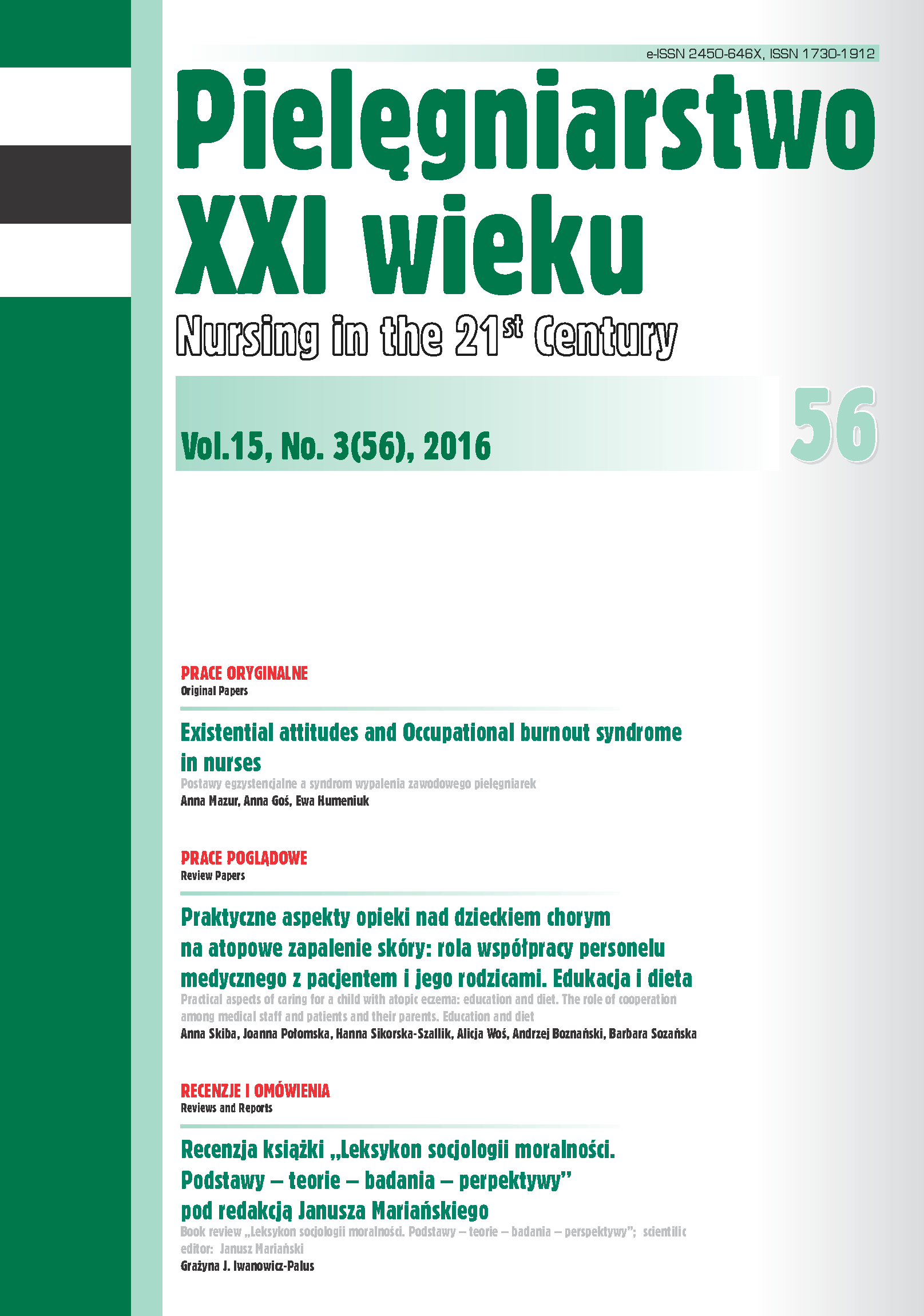Decisions on the type and range of care services for the purposes of court proceedings
DOI:
https://doi.org/10.1515/pielxxiw-2016-0029Keywords:
adjudication, opinion, nurses, law, careAbstract
DECISIONS ON THE TYPE AND RANGE OF CARE SERVICES FOR THE PURPOSES OF COURT PROCEEDINGS
Article 4, (1) Act of 15 July 2011 on the Professions of Nurse and Midwife specifies that the profession of a nurse encompasses providing health services. Point 6 specifies the kind and scope of attendance benefits, both for the patient and the care provider. It needs emphasizing that there is a statutory possibility of determining these benefits by nurses, understood as an opportunity to express a professional opinion related to specialized professional activities. This very study will both present and discuss an opinion that was created as a reference to the quoted article. The opinion is related to the scope, types and methods of performing nursing activities for the patient-plaintiff looking to receive a compensation from a healthcare entity. The document created during the process was used by the general court in the pending civil proceeding. The description that was created took the form of an established standard of care. It defines the specificity, tasks and the amount of time that every nurse needs to spend caring for a patient who is bed-bound. The opinion was created to be used during court proceedings and can be applied to similar cases. This may establish it as a source of medical knowledge in case of recommended and desired scope care exercised by nurses, physiotherapists and paramedics.
References
1. Wilmowska-Pietruszyńska A. Orzecznictwo lekarskie dla lekarzy oraz studentów wydziałów lekarskich i wydziałów lekarsko-stomatologicznych akademii medycznych. Wrocław: Wyd. II 2003; s. 4-5.
2. Ustawa z dnia z dnia 17 listopada 1964 r. Kodeks postępowania cywilnego. (Dz. U. z 2014 poz. 101).
3. Skala Barthel - wprowadzona Rozporządzeniem Ministra Zdrowia z 23 grudnia 2010 r. w sprawie świadczeń gwarantowanych z zakresu świadczeń pielęgnacyjnych i opiekuńczych w ramach opieki długoterminowej. (Dz. U. z 2010 nr 255 poz. 1719). Dostęp [5.05.2016 r.] Przyszłość świadczenia pielęgnacyjnego http://forum.gazeta.pl/forum/w,10034,147066119,147066119,przyszlosc_swiadczenia_pielegnacyjnego.html
4. Andruszczak B. Buraczyńska-Andrzejewska B. i wsp. Wielopłaszczyznowa opieka nad dzieckiem z mózgowym porażeniem dziecięcym. Medycyna Ogólna i Nauki o Zdrowiu, Tom 18, Nr 4; 2012; s. 314-318.
5. Szwałkiewicz E. Asmann M. Chrostowska M. i wsp. Opiekun medyczny w praktyce. Warszawa: Wydawnictwo Lekarskie PZWL; 2013, s. 8-10.
6. Charakterystyka zawodu - opiekun medyczny. Dostęp [2.05.2016 r.] http://www.medykns.eu/opiekun-medyczny
7. Ksykiewicz-Dorota A. Zarządzanie w pielęgniarstwie. Warszawa: Wydawnictwo Lekarskie PZWL; 2013, s.183-201.
8. Rozporządzenie Ministra Zdrowia z dnia 20 kwietnia 2016 r. w sprawie medycznych czynności ratunkowych i świadczeń zdrowotnych innych niż medyczne czynności ratunkowe, które mogą być udzielane przez ratownika medycznego. (Dz.U. 2016, poz. 587).
9. Borkowska M. Szwiling Z. Metoda NDT Bobath. Warszawa: Wydawnictwo Lekarskie PZWL; 2011, s.10-12.
10. Opieka nad chorym. Problemy z przełykaniem. [Dostęp 23.03.2015 r.] http://opiekanadchorym.pl/niepokojace-symptomy/problemy-z-przelykaniem/
Downloads
Published
Issue
Section
License
Copyright (c) 2016 Authors

This work is licensed under a Creative Commons Attribution-NonCommercial-NoDerivatives 3.0 Unported License.




